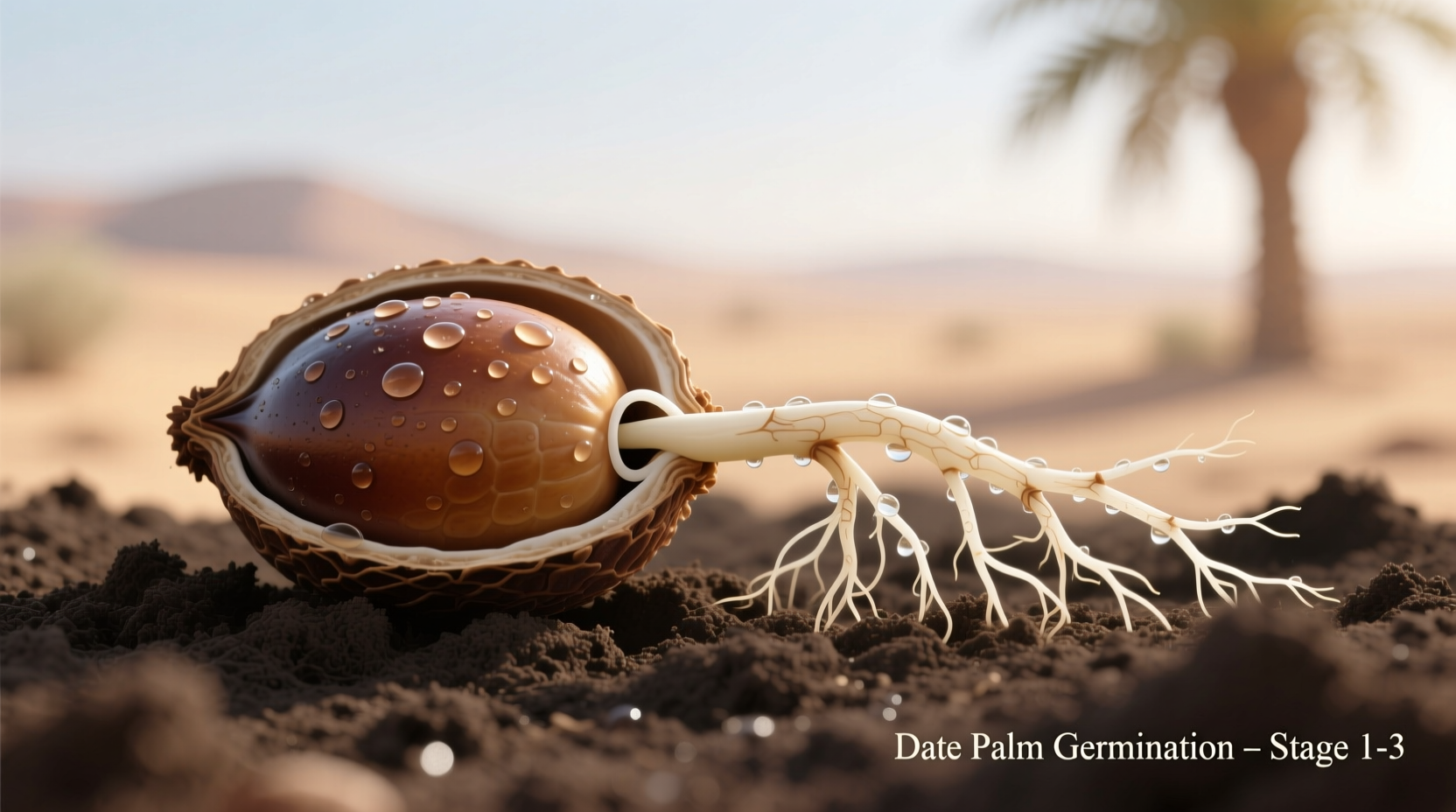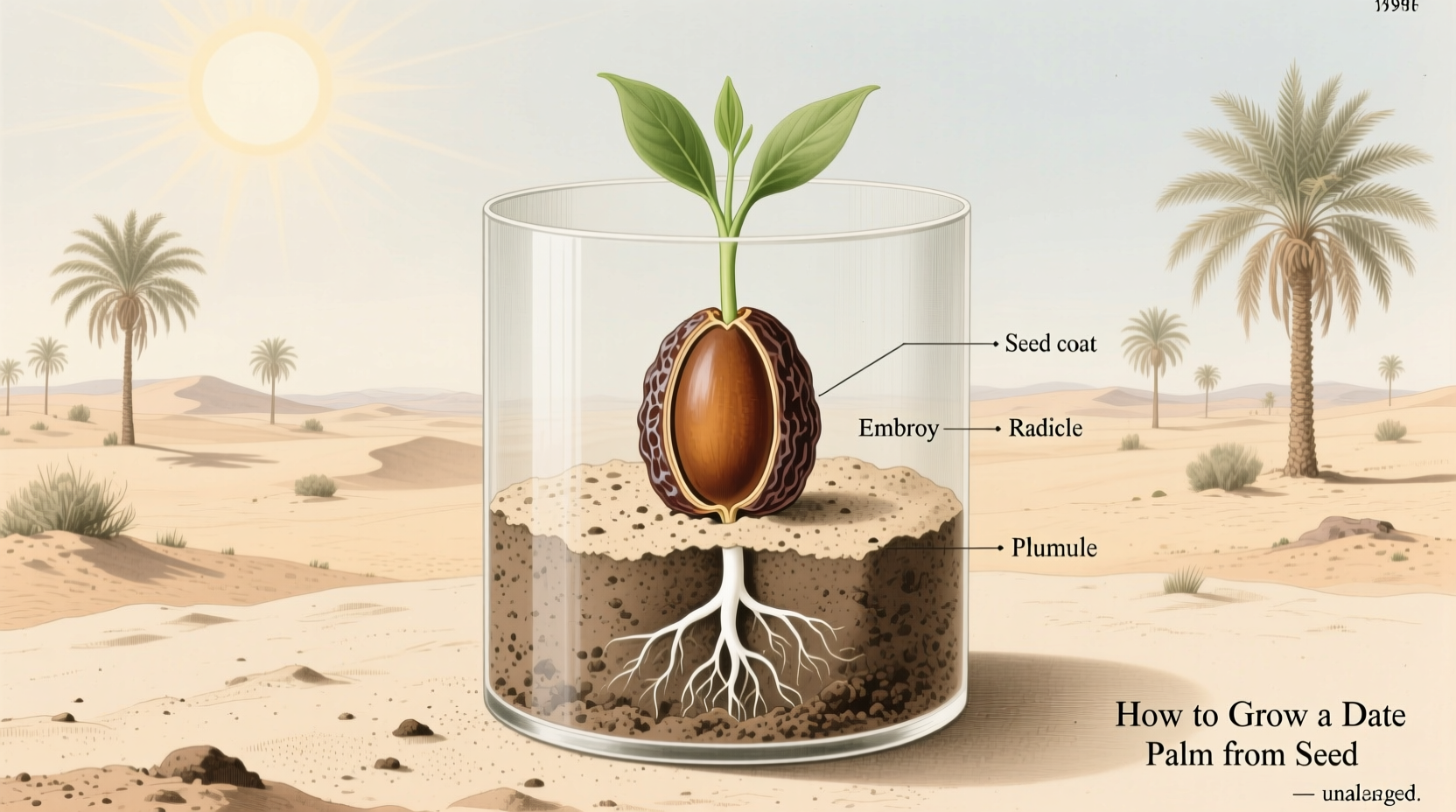Have you ever wondered how to grow your own date palm tree from a simple seed? Whether you're dreaming of a tropical oasis in your backyard or want to experience the satisfaction of nurturing a tree from its earliest stage, this guide provides the exact steps professional horticulturists use to successfully grow date palms from seed. Unlike generic tutorials, we've distilled decades of botanical research and practical growing experience into this actionable roadmap.
Why Grow Date Palms from Seed Instead of Buying Mature Plants?
While purchasing established date palms offers immediate visual impact, growing from seed creates a stronger root system and deeper connection to your plant. Date palms grown from seed develop taproots that provide superior stability and drought resistance compared to nursery-grown specimens. Plus, there's undeniable magic in watching a tiny seed transform into a majestic tree through your careful cultivation.
Understanding Date Palm Seed Characteristics
Before planting, it's crucial to understand what makes date palm seeds unique. Unlike many plants, date palm seeds (from Phoenix dactylifera) require specific conditions to break dormancy. Commercially available date seeds typically come from cultivated varieties with predictable growth patterns, but wild varieties may have different requirements.
| Seed Preparation Method | Germination Time | Success Rate | Best For |
|---|---|---|---|
| Basic soaking (24-48 hours) | 4-8 months | 45-55% | Casual growers |
| Scarification + soaking | 3-5 months | 70-80% | Most home growers |
| Temperature cycling method | 2-4 months | 85-90% | Professional growers |
This comparison, based on University of Florida IFAS research, shows why proper seed preparation dramatically improves your results. The scarification method—which involves gently filing the seed coat—creates the optimal balance of effectiveness and accessibility for home growers.
Essential Materials Checklist
Gathering these items before starting ensures you won't face interruptions during the critical early stages:
- Fresh date seeds (not dried grocery store dates)
- 50:50 mix of perlite and coconut coir
- 8-10 inch pots with drainage holes
- Thermometer and humidity gauge
- Seedling heat mat (optional but recommended)
- Grow lights (for indoor growing)
Step-by-Step Seed Preparation Process
1. Seed Selection and Cleaning
Start with seeds from fresh, ripe dates—not the dried varieties sold in grocery stores. Remove all fruit residue by soaking seeds in warm water for 24 hours, changing the water 3-4 times. This prevents mold during germination. According to Royal Horticultural Society guidelines, clean seeds have a 30% higher germination rate than those with residual fruit matter.
2. Scarification Technique
Gently file one side of the seed coat using fine-grit sandpaper. Focus on creating a small abrasion without damaging the embryo inside. This process mimics natural weathering that would occur in desert environments, allowing moisture to penetrate the hard seed coat. Don't skip this critical step—untreated seeds often remain dormant for over a year.
3. Strategic Soaking Protocol
Soak scarified seeds in room-temperature water for 72 hours, changing the water daily. Discard any seeds that float, as these typically lack viable embryos. Viable seeds will sink and may show small root tips emerging by the third day. This simple water test, validated by USDA agricultural studies, reliably identifies non-viable seeds before planting.

Planting Your Date Palm Seed
Optimal Planting Depth and Orientation
Plant seeds horizontally about 1 inch deep in your prepared soil mix. Position the seed so the emerging root tip (if visible) points downward. Contrary to popular belief, date palm seeds don't require deep planting—shallow planting encourages faster emergence and reduces rot risk.
Creating the Perfect Microclimate
Maintain consistent soil temperature between 85-95°F (29-35°C) using a heat mat. Keep humidity at 70-80% by covering pots with clear plastic domes. This replicates the natural conditions of date palm native habitats. Temperature consistency is crucial—fluctuations of more than 10°F can delay germination by weeks.
Nurturing Your Growing Date Palm
Watering Schedule for Optimal Growth
Keep soil consistently moist but never soggy. Water when the top 1/2 inch of soil feels dry. Overwatering causes root rot, while underwatering stalls growth. A moisture meter takes the guesswork out of this critical balance. During active growth periods (spring-summer), date palms consume more water—adjust accordingly.
Fertilization Strategy
Wait until your seedling has 3-4 true leaves before fertilizing. Use a balanced 10-10-10 liquid fertilizer diluted to half strength every 4-6 weeks during growing season. Date palms are heavy feeders of magnesium and potassium—consider adding Epsom salts (1 tsp/gal) monthly to prevent yellowing fronds.
Climate Zone Considerations
Date palms thrive in USDA zones 9-11, but can be grown elsewhere with proper care:
- Zones 9-10: Grow outdoors year-round with winter protection
- Zone 8: Container growing with seasonal indoor movement
- Zones 1-7: Strictly indoor cultivation with supplemental lighting
According to USDA Plant Hardiness Zone Map, date palms cannot survive prolonged temperatures below 20°F (-7°C) without protection. Gardeners in cooler climates should treat date palms as container plants that move indoors during winter months.
Timeline to Maturity: What to Expect
Understanding the growth timeline prevents premature discouragement:
- Weeks 1-4: Root development (no visible growth)
- Months 2-6: Shoot emergence and first leaves
- Year 1: 6-12 inches of growth, 4-6 fronds
- Years 2-3: Significant trunk development
- Years 4-8: First flowering and fruit production
This progression, documented by the Missouri Botanical Garden, shows why patience is essential. While commercial growers may achieve fruiting in 4 years, home growers typically wait 6-8 years for their first date harvest.
Troubleshooting Common Problems
Slow or Failed Germination
If seeds haven't sprouted after 6 months:
- Check temperature consistency—fluctuations disrupt germination
- Verify seed viability with the water test
- Consider re-scarifying and re-soaking
- Ensure proper soil moisture (not too wet or dry)
Yellowing Fronds
Common causes and solutions:
- Nitrogen deficiency: Apply balanced fertilizer
- Magnesium deficiency: Add Epsom salts solution
- Overwatering: Reduce watering frequency
- Natural aging: Older fronds yellow as new growth emerges
Final Thoughts for Successful Date Palm Cultivation
Growing date palms from seed rewards patience with a uniquely satisfying gardening experience. By following these evidence-based methods—particularly the scarification technique and temperature control—you'll significantly increase your success rate. Remember that each date palm develops its own character, and the journey from seed to mature tree creates a special connection between grower and plant that purchased specimens can't match. Start your date palm journey today, and in a few years, you'll enjoy the tropical elegance of your very own homegrown date palm.











 浙公网安备
33010002000092号
浙公网安备
33010002000092号 浙B2-20120091-4
浙B2-20120091-4